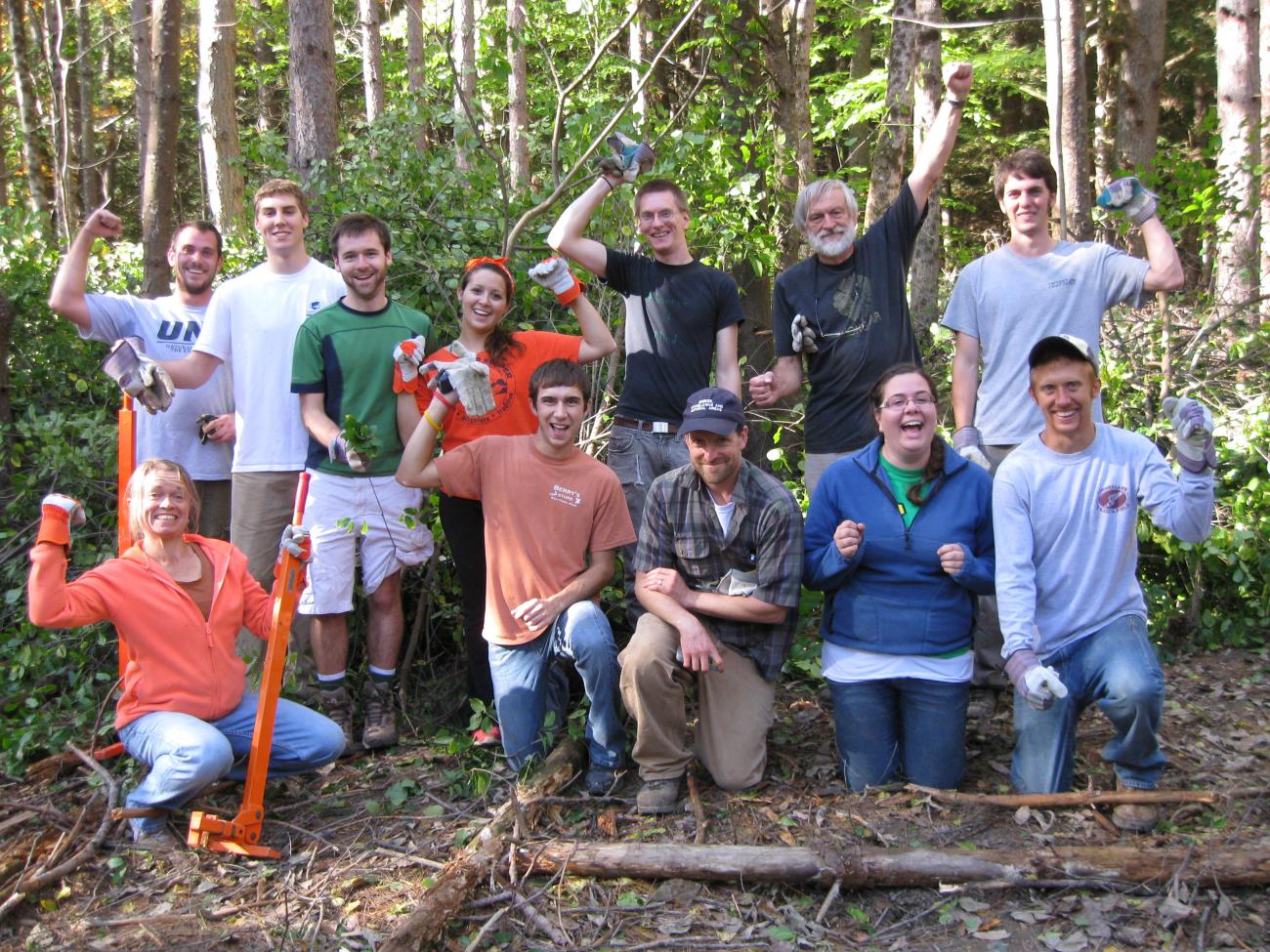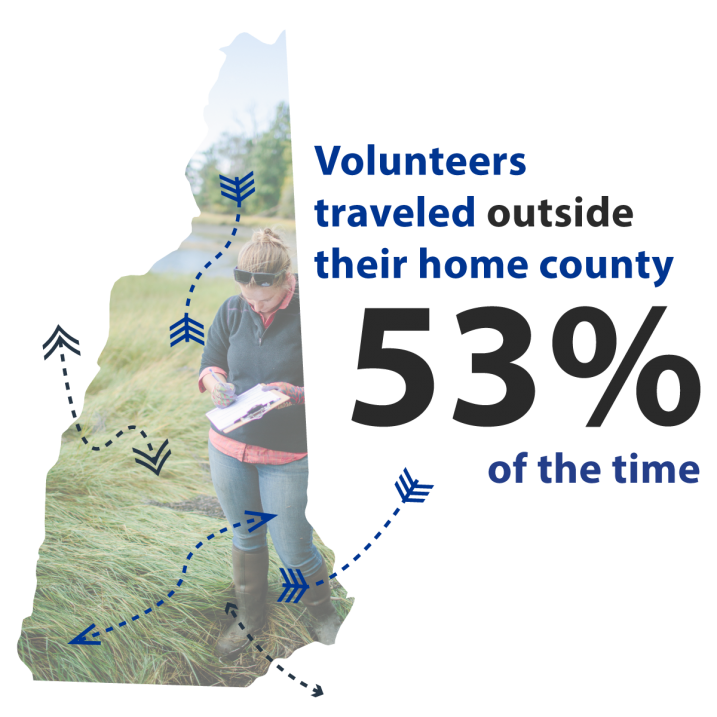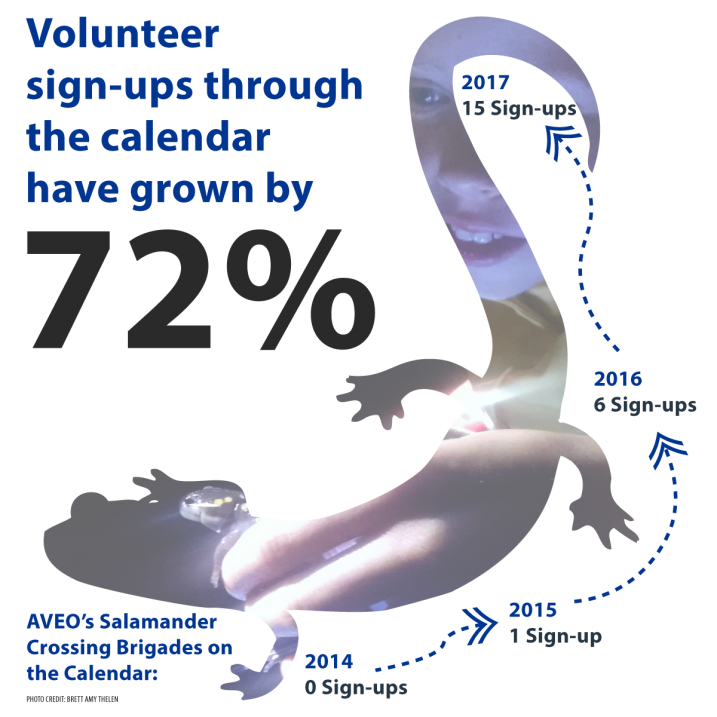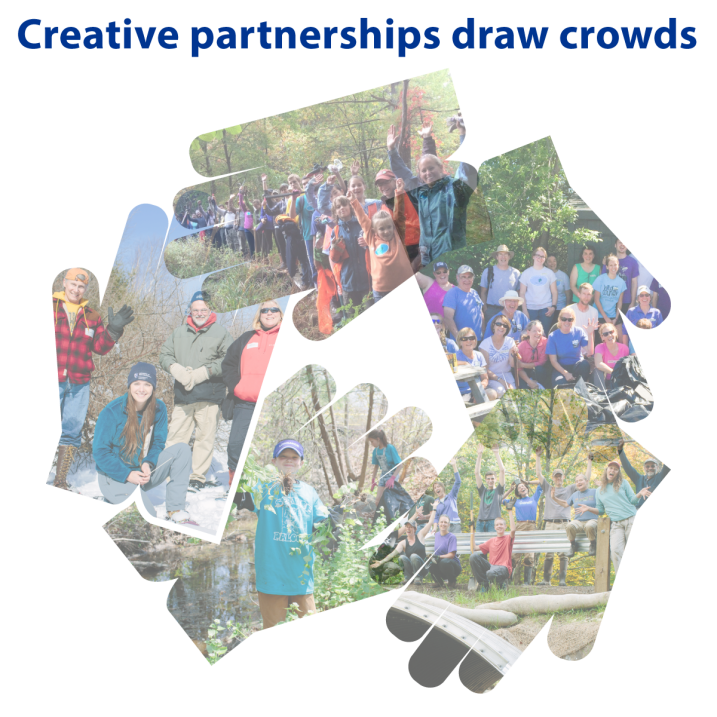Staying Smart About Stewardship Volunteers: 3 Lessons from our Shared Calendar

In the last three years, more than 165 groups have used the Nature Groupie shared calendar to publicize stewardship and citizen science events and trainings and attract volunteers.
Thanks to the calendar, volunteers can sign-up to plant grasses that restore coastal dunes; build bridges on trails that lead hikers up mountains; count rabbit pellets; pull invasive plants; monitor water quality; foster baby oysters; and more—all with a click of a button.
During our 2016 partner research, we learned that groups recruiting volunteers through Nature Groupie wanted more information about our users and trends. You asked things like, “Who is volunteering? What skills and experience do they bring to my stewardship workday or citizen science research? What motivates them to sign-up?” We looked at our three years of calendar data and here’s what we found out:
#1 – Some Volunteers Go the Distance
Volunteers using our calendar are from every county in New Hampshire; a few are from neighboring states. Most events take place in New Hampshire, although there have been events in five New England states. Volunteers using the Network calendar often travel between counties to go to workdays or trainings. Of the thousands of sign-ups to date, 53% were for opportunities outside of the volunteer’s home county.
What can you learn from this? Don’t assume your volunteers are locals and know how to find your event. When you Add an Experience, add a Google Map link and include details about parking in your description. If the meeting location has a common/local name and a formal name, give both. On the day of the event, use signage to indicate your event location, and be sure to consider volunteers coming from multiple directions.
Already have directional details covered? Make sure your description explains the broad impacts of the event (i.e. recreation, water quality, wildlife habitat, etc.). For instance, if you’re hosting an invasive pull on conservation land, explain how it helps the ecology of the area. Be specific and brief. Will it help a wildlife or plant species? Will the project also benefit recreational users? New volunteers will also appreciate a two-minute introduction to your workday explaining the stewardship and ecological issues in your community.
#2 If at First You Don’t Succeed…
Maybe you posted an event to the calendar awhile back, but no one signed up and you got discouraged. We have some good news: in the last two years, volunteer sign-ups through the calendar have grown an average of 72%.
For the Harris Center for Conservation Education, a nonprofit conservation organization in Hancock, New Hampshire, continued use of the calendar has over time increased their sign-ups and outreach across the state.
“Nearly half the people at our Falls Brook volunteer workday (October 2016) came via Nature Groupie, and some traveled an impressive distance to be there,” says Brett Thelen, science director for the Harris Center. “Nature Groupie has certainly given our work broader exposure.”
In 2014, the Harris Center and its citizen science arm, the Ashuelot Valley Environmental Observatory (AVEO), posted their annual Salamander Crossing Brigades training on the calendar, but didn’t get any sign-ups. The following spring, they received one sign-up. Last year, six people signed up to help the salamanders.
The lesson here is simple: Many more people are using the calendar to sign up for volunteer events, so try again!
#3 Creative Partnerships Draw Crowds
A whopping 38 volunteers signed-up to participate in a recent Great Bay Clean Up at the Great Bay National Wildlife Refuge in Newington, New Hampshire. The Great Bay has been the focus of intense conservation efforts, but the 69 conservation parcels that border the Bay and are owned by 10 different public and private conservation groups (land trusts, towns, state, and federal), make coordinated stewardship complex.
The event benefited from the support of the partners involved, including a duck hunting group, the Great Bay Gunners, the Gundalow Company, UNH Extension’s Geospatial Technologies Training Center, the Piscataqua Region Estuaries Partnership and Nature Groupie. Volunteers arrived with friends and family in tow and cleaned up 2,400 lbs of trash in only two hours!
The Great Bay Clean Up is one of many multi-partner events that attracted many volunteers:
- Thirty-seven volunteers signed up for Sweet Trail Volunteer Workday & Training, which was led by the Nature Conservancy and co-sponsored by the Great Bay Resource Protection Partnership, which included the Society for the Protection of New Hampshire Forests, the Town of Durham and others.
- The (7th Annual) Mink Brook Nature Preserve Garlic Mustard Pull drew 32 volunteers, including a Girl Scout troop, and was co-sponsored by the Upper Valley Land Trust, the Hanover Biodiversity Committee and the Hanover Conservancy.
- Most recently, the Winter Cottontail Surveys Volunteer Training with NH Fish & Game and UNH Cooperative Extension received 32 sign-ups to conduct surveys for Eastern cottontail rabbits by collecting pellets (poop!).
The more partners at the table, the more potential audiences and connections you can leverage to promote your event and bring in volunteers.
Next time you’re planning an event, reach out to another group to see if they’d like to get involved, too. It could be another conservation or environmental group, or it could be completely outside of the box. You can also reach out to us at Nature Groupie. Contact us to discuss your project!


